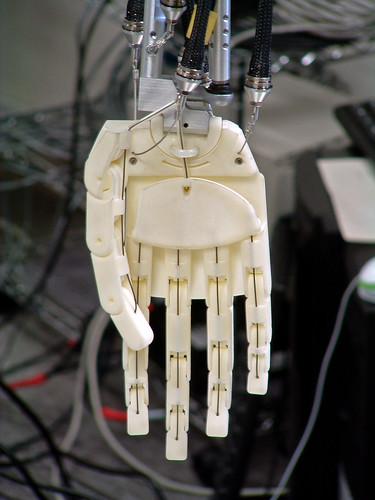It’s a strange thought that new printing developments may soon be helping with prosthetics. You may have seen 3D printing techniques talked about in the media recently, especially in terms of ‘3D printed equipment’. Now it seems this technique can be used to “print” artificial limbs.

It’s a peculiar concept because printing is generally thought of as ink on paper. Usually the ink is undetectable as a ‘layer’ on the paper, but that is effectively what it is. With 3D printing it’s easier to detect but harder to get your head around!
Basically whatever the material being used i.e. plastic, nutrients and oils in the case of food stuffs, metal or other materials, the printer follows a template (a scan of what you want to replicate) to print layer upon layer to produce a 3D model.
See some of the many uses explained at the 3D Printer Show in London last autumn here:
So many uses in medicine
As you’ll see in the video above there is more to 3D printing than model making. Developments so far, for medicine, include a robot hand for those who are either born without or lose their fingers in accidents. The availability of this new technology won’t be seeing any decline in the demands for stair lifts though, as although a common need for a stairl ift is after an amputation, all stairlifts on the market today are designed so that the toggle can be pushed either way with either hand, robotic or otherwise.
Take a look at how they developed the ‘robot hand’ here:
Organs for transplant
But the possibilities seem to be endless. It’s like this technology has opened an array of possibilities. There is speculation that this printing method may be able to replicate kidneys or livers for organ transplants. They aren’t there yet, but scientists see a future for this.
‘There is a huge amount of excitement around the potential for printing human tissue. Dr Anthony Atala, director at North Carolina’s Wake Forest Institute of Regenerative Medicine, received a standing ovation at a 2011TED talk where he printed a prototype human kidney live on stage using living cells. Although a fully functioning kidney for transplant is many years away, Atala’s primitive organ produces a urine-like substance.’ (Source: http://www.dezeen.com/2013/05/19/3d-printing-organs-medicine-print-shift/)
A bionic ear
Another development from Princeton University where this method has been used is to develop a bionic ear which can hear beyond the usual human range. The prototype for this was printed from hydrogel a material already used in tissue engineering. Again this area is ‘still under development’ as the bionic ear can currently only hear or receive radio waves, but it’s only a matter of time.
The future looks very exciting for those of us who might need this type of help. If you are finding it harder to hear, or wondering if you are going deaf, then we can put you in touch with a local audiologist who can help with assessing your hearing for free.
